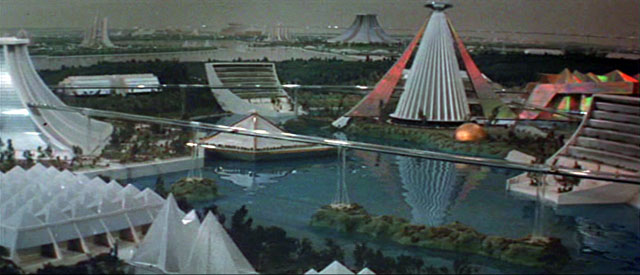

Posted on 08/12/2013 9:37:06 PM PDT by Vince Ferrer
Existing conventional modes of transportation of people consists of four unique types: rail, road, water, and air. These modes of transport tend to be either relatively slow (i.e., road and water), expensive (i.e., air), or a combination of relatively slow and expensive (i.e., rail). Hyperloop is a new mode of transport that seeks to change this paradigm by being both fast and inexpensive for people and goods. Hyperloop is also unique in that it is an open design concept, similar to Linux. Feedback is desired from the community that can help advance the Hyperloop design and bring it from concept to reality.
Hyperloop consists of a low pressure tube with capsules that are transported at both low and high speeds throughout the length of the tube. The capsules are supported on a cushion of air, featuring pressurized air and aerodynamic lift. The capsules are accelerated via a magnetic linear accelerator affixed at various stations on the low pressure tube with rotors contained in each capsule. Passengers may enter and exit Hyperloop at stations located either at the ends of the tube, or branches along the tube length.
In this study, the initial route, preliminary design, and logistics of the Hyperloop transportation system have been derived. The system consists of capsules that travel between Los Angeles, California and San Francisco, California. The total trip time is approximately half an hour, with capsules departing as often as every 30 seconds from each terminal and carrying 28 people each. This gives a total of 7.4 million people each way that can be transported each year on Hyperloop. The total cost of Hyperloop in this analysis is under $6 billion USD.
(Excerpt) Read more at spacex.com ...
It’ll never get funded, never pass the regulatory process, be tied up in court by the Sierra Club for years ...
And, since the only way it could get built for great distances would be above ground [underground not economically feasible], every whackjob would be taking pock shots at it with their guns.
One leak to break the vacuum - and it comes to a stop ...
Aside from the cost, I can’t see how they could compensate for earth movements. The last thing I’d want is to slam into a side at 800 mph because the tunnel moved over by three inches.
It’s not supposed to have a vacuum. It will use fans to distribute the air pressure, so it behaves like it’s in a vacuum without it being in one.


They are trying to address that, although I don't know how feasible it really is for complete safety. If there were a real earthquake, the tube would have to be shutdown immediately. And if you are travelling at 700 miles an hour and it moves, you'd become a statistic. But if they are safe on every other occasion, they would still be better than cars.
I have often had thoughts along the lines of this system.
However, rather than carrying passengers, I thought of tubes, perhaps smaller in diameter, that would be designed for freight only.
Rather than taking the people off the roads, why not take the trucks off the roads? Likewise remove cargo from air traffic.
With freight, you can have faster acceleration and sharper curves, and temperature/pressure is less of an issue. Plus, if there’s an accident, nobody dies. It would also be a good proof of concept before using it for passengers. And you could offer faster package delivery between major cities.
Anyone with claustrophobia would freak out in that thing.
Only if you could take it from the end of your driveway and go anywhere you want, for as long as you want. A motor vehicle gives me freedom that no mass transit system could ever provide.
So what happens to the people when their transport cube thing when IT Oops....messy cleanup.
I guess we are now starting with super-gay names for cutting-edge (what passes for it) bankruptcy ideas.
Won’t save anyone time. TSA will be in charge of security. two-three hour waits on both ends will really negate any time savings.
Earthquake dislocation is simply solved with base isolation supports.
No on board bathroom and you can’t pull over to take a wiz. Not faster than current air travel. What we have is good enough.
In event of earthquake isolation supports damp the shaking but this system has to cross fault lines which will shear in the next big one. A slip of up to 30 feet has been recorded in a single earthquake along this fault.
“Logans Run” health system is the blueprint for ObamaCare death panels and all.
>> similar to Linux
It’s not reasonable to compare the demands of civil engineering to the indeterminate, malleable process of software development.
Slow down with flexible tubes at fault crossings. Adds a couple of minutes to the trip.
Disclaimer: Opinions posted on Free Republic are those of the individual posters and do not necessarily represent the opinion of Free Republic or its management. All materials posted herein are protected by copyright law and the exemption for fair use of copyrighted works.